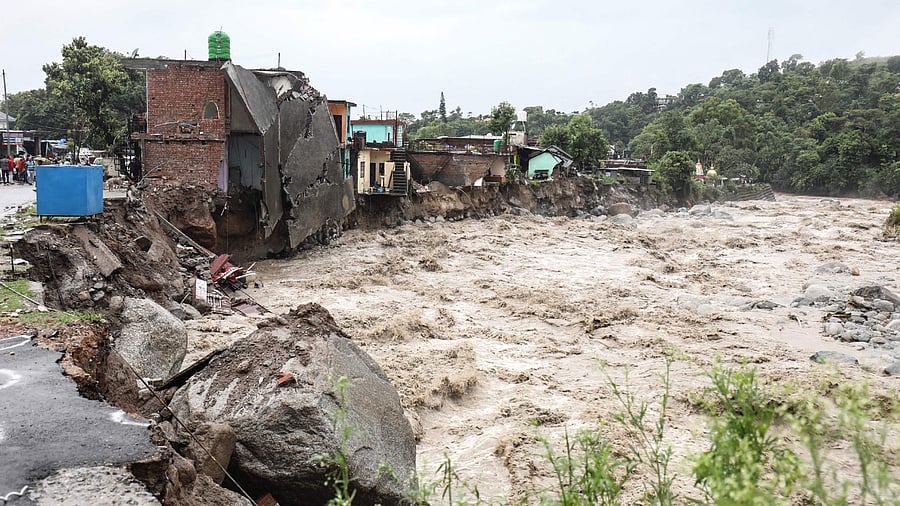
Dharamshala, a mountain town in Himachal Pradesh, a designated smart city under the central government's Smart City Mission(SCM), saw flash floods on Monday, July 12. A few years ago, Bihar's capital Patna, another "smart" city, was flooded. The then deputy chief minister of the state, Sushil Modi, had to be rescued from his house. Varanasi, currently undergoing redevelopment work, was flooded a few months back. Lastly, the example of Delhi's Chandni Chowk, where a redevelopment project is nearing completion, flooded a few days ago when there was hardly any rainfall.
In these cities and several others where public works are ongoing, such flooding has become a standard feature either because of redevelopment projects or under the smart city mission.
Images and videos of Dharamshala are viral on social media, where a small rivulet turned its course onto a road and hit cars and buildings. Such episodes are bound to happen in the days to come as the monsoon advances and strengthens further.
But it is not just excessive rainfall, as a section of the media portrayed, that caused flash floods in the mountain town. The town receives the fifth highest rainfall in the country, and such heavy rain is typical in Dharamshala.
The flash flood in Dharamshala is surprising since floods do not take place in a mountain town. Instead, these are experienced in flatlands as the water washes down from the mountains. These rains play havoc in the hills due to shrinking open spaces and buildings constructed on the rivulets. But the blocking or changing course of normal water contours developed since millennia is causing floods in the plains.
The smart city projects in most cities and towns have hit these water flows with the result that every year we now experience floods in areas where there were hardly any in the past.
Take, for example, Shimla, the summer capital of India during the British raj. The British engineering manual barred construction on such water channels. It not only prohibited their concretisation but recommended embankment of these channels to ensure that water trickles down the mountain and recharges many other water sources below in the form of natural springs.
However, in the last few decades, almost all stormwater drains and nullahs have been concretised. The concretisation of these stormwater drains leads to gushing of water and flooding in the lower areas. It has happened in Dharamshala and elsewhere. We know what happened in Dharamshala was not a cloudburst. The total rainfall in Dharamshala on July 12 was 120 mm in 24 hours. In a cloudburst, it is a minimum of 100 mm in an hour. In Palampur, another adjacent town, on the same day, there was 155 mm of rainfall in a day, but there were no flash floods in that small town. Perhaps it is yet to get the taste of the smart city infrastructure building.
In Shimla town, several buildings, duly approved by the state statutory agencies like the town and country planning department and the municipal corporation, are built on some of the nullahs and can lead to disaster in times to come. Some of these large buildings include the Lawyers Chambers on the High Court Nullah, the Sports Complex on the Lift Nullah and two large complexes built on the Indira Gandhi Medical College (IGMC) nullah. One of these is a 15 storey building meant to house the OPD of the hospital. Another building, more than ten storeys, is the large parking below Boileauganj, meant to be a transit point for the proposed ropeway.
Not just the mountain towns but even in cities in the plains, it is universally done. The natural water collection centres or ponds have been usurped for real estate development, or their land use changed for some other purpose. In Gurgaon, for example, many ponds are now sites for buildings, parks and playgrounds.
The United Nations' call for the decade implores decisive action to ensure this massive land-use change witnessed and mainstreamed in the development strategies is reversed to ensure more appropriate climate change adaptations.
Unfortunately, the trajectory of development in urban India, especially after the smart cities projects, is for more concretisation and infrastructure projects without raising adequate and proper concern for the hydrology and ecology of a region.
At least when designing projects, people who have known the region should be engaged and hydrologists and geologists to ascertain minimum loss to the ecosystems.
(The author is a former deputy mayor of Shimla)